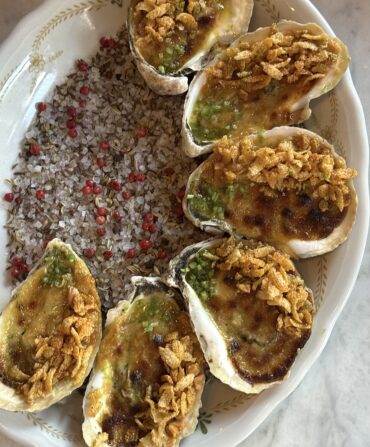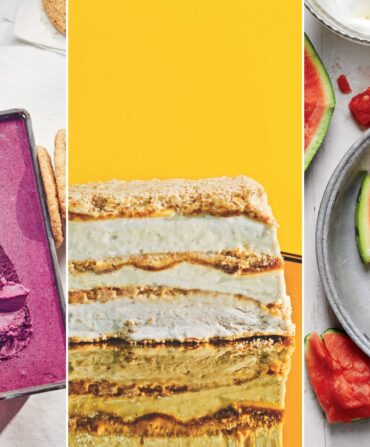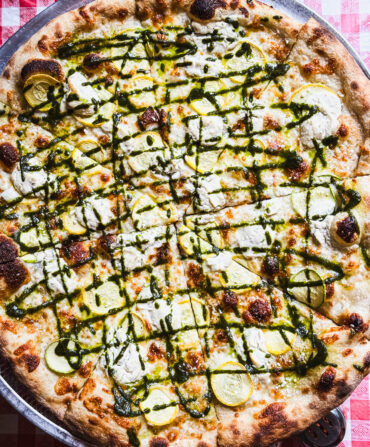J. Kenji López-Alt didn’t get his fried chicken recipe from his grandmother. Raised in Cambridge, Massachusetts, and New York City, he figured it out through trial and error. “I made every conceivable bad version of fried chicken along the way,” he writes in The Food Lab: Better Home Cooking Through Science, a years-in-the-making book likely to become an essential reference for anyone interested in the fundamentals of food. Burnt, greasy, a little bit raw. He went through some fifty birds before he settled on a recipe.

Crisp on the outside and seasoned to the bone with a mixture of buttermilk, black pepper, garlic powder, cayenne, oregano, and paprika, the product of that comprehensive battery of tests is a recipe worth passing along to the next generation. So are equally airtight guides to everything from classic potato salad to macaroni and cheese to chili con carne. López-Alt might not hail from cornbread country, but he does care about getting it right. So we asked him to help us debunk five common myths about fried chicken, biscuits, and more.

MYTH: The best fried chicken starts and ends in a skillet.
“When I was testing this recipe, my first goal was to get the texture of the crust just right, and I didn’t pay a lot of attention to the inside,” López-Alt says. “I was frying at a bunch of different temperatures for different times, and when the skin was perfect, the inside was a little raw. So I decided to finish it in the oven.” He takes the chicken out of the hot oil once it is golden-brown and bakes it on a rack until cooked through. “It’s absolutely possible to finish it in a skillet at a lower temperature,” he says. “But when I tried the batches side-by-side, the chicken finished in the oven was definitely better.”
MYTH: Soap destroys the seasoning on cast-iron cookware.
Keep that brand-new skillet out of the sink, but go ahead and soap up your well-seasoned heirlooms. “At first, what is protecting the cast iron is fat,” López-Alt says. “Soap will strip that away. But once you have a layer of seasoning, that fat has broken down into a tough layer that is a polymer, a plastic.” A dollop of dish soap won’t hurt a seasoned pan, and can in fact be the best way to remove the stubborn likes of shortening and bacon fat. Just avoid metal scouring pads and other abrasive cleaners, which can do actual damage.
MYTH: If you salt your beans before cooking them, they’ll never get soft.
“Not only is that completely untrue, but it’s easy to prove wrong,” López-Alt says. “Next time you make beans, put two pots side-by-side and only salt one. The beans with salt actually cook better, because the salt helps prevent the skins from blowing out. You can even soak beans in salted water overnight if you really want to keep the skins intact.” López-Alt has no idea where this popular kitchen myth came from. “One thing that does affect beans is acid,” he says. “With acids, beans take a long, long time to cook.”
MYTH: Frying fish makes oil fishy.
You might blame the catfish for the rancid, low-tide smell that hangs around some well-used fryers, but the truth is that the fried chicken or hush puppies could be equally at fault. “The idea that frying fish can cause fishy cooking oil is not really true,” López-Alt says. “That aroma actually comes from the oil breaking down, and you can get it without ever cooking fish.” Oil breaks down quickly when it is full of particulate matter, like the crumbs left over from a cornmeal or flour dredge. So strain it well if you want it to last, through a coffee filter or fine-mesh strainer. Then use it to fry whatever you want.
MYTH: Mixing the ingredients by hand is the only way to make authentically light, flaky biscuits.
“The best buttermilk biscuits probably are made by hand, by a great cook who has been doing this much longer than I have,” López-Alt says. “But it takes a lot of practice to make them by hand and make them good. For those of us who don’t make biscuits every day, a food processor and rubber spatula are a much more reliable way of mixing things.”
He uses the food processor to chop the butter into the flour and the spatula to fold the buttermilk into the mixture. Using cool kitchen tools instead of warm hands, he is less likely to melt the butter or overwork the dough. That means lighter, softer biscuits. “And by mixing with a spatula, you also get a head start on those flaky layers,” he says.







